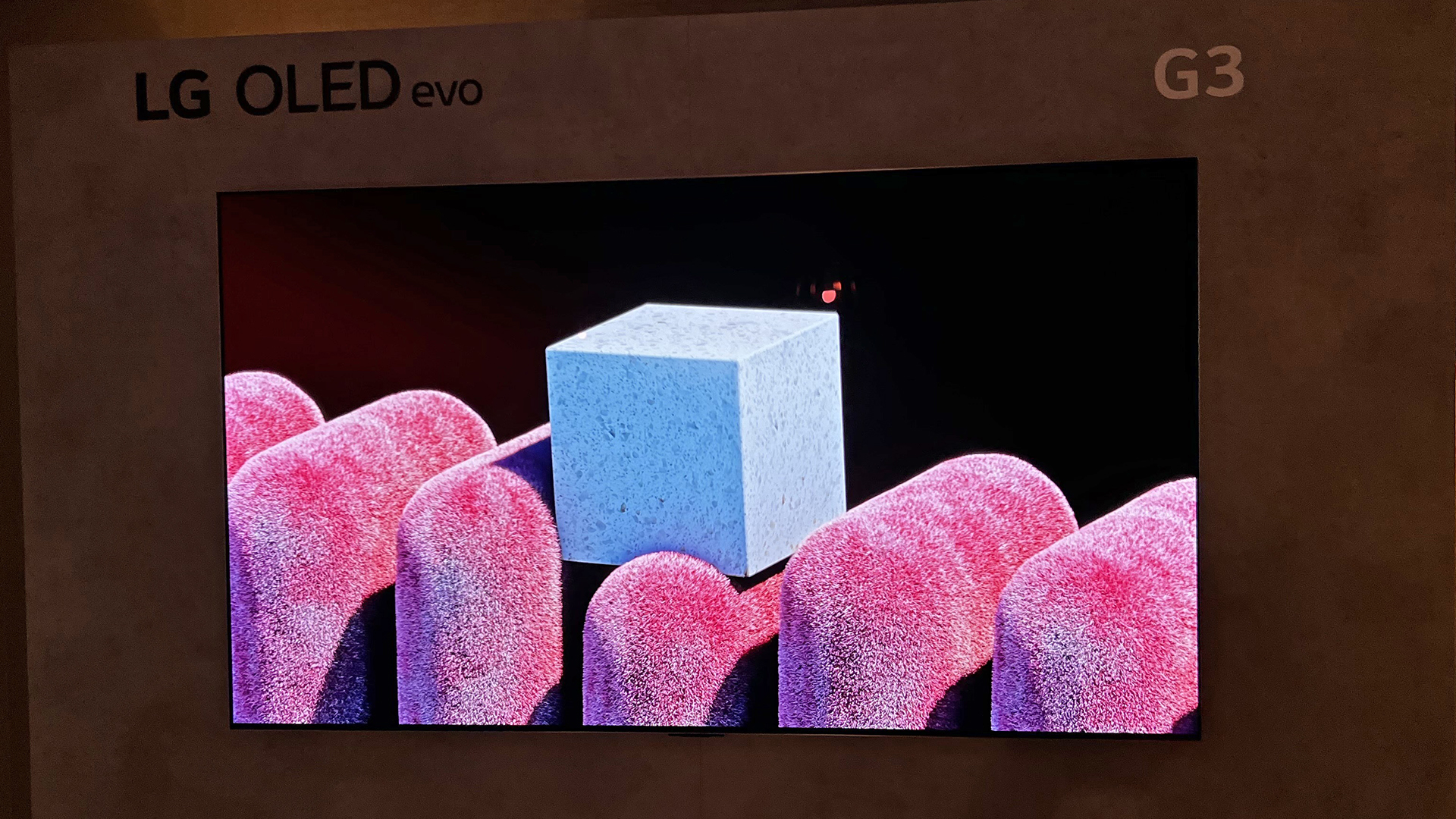The upcoming LG G3 OLED uses a Micro Lens Array panel in order to boost brightness, the company has confirmed to TechRadar. It’s rare for LG Electronics to ever confirm what sort of OLED panel it’s using, and it had been extremely cagey about what was in the G3, but the company explained that some sizes (explained below) of the G3 will use so-called ‘3rd-gen OLED’ panels from LG Display – the latter is the part of LG that actually makes OLED screens (its panels are used in almost all the best OLED TVs), and operates separately to LG Electronics, which makes the TVs.
LG has been showing the G3 off at recent events, and the headline news is that the TV looks set to match or even exceed the (perhaps briefly) world’s-best brightness of the Samsung S95C, which we measured during the testing time of our early hands-on Samsung S95C review.
The 55, 65, and 77-inch versions of the G3 appear to use a Micro Lens Array panel (though not the 83-incher) – these are the only sizes of 4K screen that LG Display produces with the technology in. LG recently shared these impressive real-world measurement figures with us for the G3:
First, a caveat: the figures above were taken by LG, not TechRadar. However, we expect the 10% and 100% figures to be close to the figures that we’ll get when we test the set, because that’s the kind of test we run.
That HDR Vivid reading of over 2,040 nits is pretty unrealistic for real-world viewing scenarios (who is spending this much on a TV and then watching in a weird mode?), but the 1,470 nits for a 10% window in HDR Cinema (meaning a white block takes up 10% of the screen, in a mode suitable for movie lovers) is right in line with what we measured in the same kind of tests with the Samsung S95C – we got 1,374 nits there.
These numbers, and the presence of an MLA panel ensure the G3 should be able to compete with the Philips OLED+908 and the Panasonic MZ2000 – both of which use Micro Lens Array tech.

Micro machines
If you’ve not heard of Micro Lens Array before, it’s a new technology that’s set to radically boost the brightness of OLED TVs. MLA uses billions (yes, with a b) of minuscule convex lenses that are placed over the pixels of an OLED panel to boost brightness up to 150% over traditional OLED screens.
The LG G3 OLED uses Brightness Booster Max tech coupled with ‘META’: a software brightness-boosting algorithm. This is absolutely latest-gen stuff, never-before-seen in TVs until now, and the LG G3 will be the first on the market with it this year. (Sadly, the LG C3 won’t get this technology.)
The presence of Micro Lens Array isn’t the G3’s only noteworthy new feature, though. Processing improvements include AI Super Upscaling to reduce noise when upscaling content; an improved Tone Mapping Pro feature that now analyzes the picture in 20,000 different zones to improve contrast handling; and an HDR Expression Enhancer that adjusts contrast differently depending on whether the part being processed is in the background or foreground of a picture.
The screen of the G3 OLED gets a further boost with the addition of Super Anti Reflective coating, which LG claims reduces reflections around 25% compared to last year’s LG C2 OLED. This is likely the same technology that impressed us so much in the Philips OLED+908, because it’s part of the OLED panel – you may see it referred to as ‘Vanta Black’ elsewhere.
There are also improvements on the audio front. The G3’s sound calibration is now optimised to the specific content you’re watching, with its speakers sporting 9.1.2 virtual sound thanks to AI Sound Pro, and then adjusting depending on whether it’s an action movie, quiet drama, and so on. There’s also an Auto Balance Control feature that balances high and low sounds to better fit the TV’s speakers.
As with other new LG TVs in 2023, the G3 OLED will partly support Disney Plus’ IMAX Enhanced Audio format, as well as support for DTS/DTS: X, though it will only pass these through to one of the best soundbars – it can’t handle these formats itself.


















